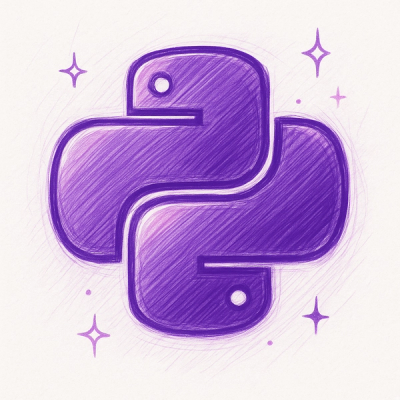Activities


Traverse the application stack with managed state lifecycle.

Installation
$ npm install activities
Overview
An Activity is effectively some discrete chunk of application state. Any
class can be an activity, but implementing one or more of the Lifecycle
Methods allows it to react to state changes / transitions in the application.
The ActivityManager class maintains an activity stack and handles calling the
lifecycle methods as the stack changes and your applications progresses through
its state graph. It exposes a Navigator instance that is a facade to its
basic navigation API of start(TActivity, mode) and finish(activity).
The Navigator facade is the primary way your application with trigger state
transitions that the ActivityManager will handle.
The idea is to abstract application state into de-coupled classes, with a
standard interface to handle transitioning between those states. This module is
potentially useful in a wide range of uses cases from Single Page Apps managing
difference screens and dialogs, to games maintaining different scenes, menus,
and modes.
Lifecycle Methods
Any class can be used as an activity. To add functionality that occurs during
state transitions, implement any of the following methods to a class:
-
onCreate(bundle) Activity has been initiated. Do all one-time setup and
initialization code here. Can receive data from whatever started the
application via the optional bundle parameter.
-
onStart() Activity has been started. This is called a single time to
indicate the activity is about to allow interaction with the user.
-
onResume() Activity is now ready for interaction with the user. Called
after onStart() or when returning from a paused state. This function could
be called several times of the duration of the activity.
-
onPause() Application is about to resume another activity, or this
activity is getting shut down. Save any state or suspend and updating /
monitoring here. Always called before onStop().
-
onStop() Activity is shutting down. Put any shutdown / finishing /
unbinding behavior here. Called only once, right before onDestroy().
-
onDestroy(finish: Function) Called right before the activity is removed
from the stack. If an activity implements this function, the provided
finish() function MUST be called to complete the removal of the activity,
or it will remain in the Activity stack indefinitely.
-
onBlur() This is called if another Activity is pushed onto the stack
without pausing the current activity. See Launch Modes. Always followed
by onFocus().
-
onFocus() Always called after onBlur() when the Activity is back on the
top of the stack.
Launch Modes
-
STANDARD A new instance of the activity is created every time it is
requested to start.
-
SINGLE_TOP Same as STANDARD, except that if the top activity in the
stack is the type of Activity we're trying to launch, re-use it.
-
SINGLE_INSTANCE Whenever an activity is launched, re-use an existing
activity if there is one of the same type in the stack.
-
FLAG_CLEAR_TOP OR-able flag to add to the mode that indicates to clear
all activities below the launched activty. e.g., SINGLE_INSTANCE | FLAG_CLEAR_TOP.
Usage
Setup the ActivityManager and Navigator
Ideally, your ActivityManager should be handled at the top application level
with some sort of IoC container. All examples will just "assume" we have the
navigator available somehow.
var ActivityManager = require('activities').ActivityManager;
var manager = new ActivityManager();
var navigator = manager.navigator;
Defining an Activity and Lifecycle Methods
An activity is any Javascript class:
function HelloActivity()
{
this.name = '';
};
HelloActivity.prototype.hello = function()
{
console.log('Hello, ' + (this.name || 'World') + '!');
};
But for it to be interesting, let's implement some of the lifecycle methods:
HelloActivity.prototype.onStart = function()
{
console.log('starting...');
this.hello();
};
And start the activity (like at the root of your application):
navigator.start(HelloActivity);
We can pass data into an activity when we start it, which will
be received in the onCreate method:
HelloActivity.prototype.onCreate = function(data)
{
console.log('creating...');
this.name = data;
};
Start the activity with a third parameter to pass in data (the middle parameter
specifies the launch mode):
navigator.start(HelloActivity, null, 'Brandon');
When an activity is torn down, it runs through the onPause(), onStop(), and
onDestroy() lifecycle events if available.
HelloActivity.prototype.onPause = function()
{
console.log('pausing...');
};
HelloActivity.prototype.onStop = function()
{
console.log('stopping...');
console.log('Goodbye, ' + (this.name || 'World') + '!');
};
And onResume is fired every time the Activity is made primary:
HelloActivity.prototype.onResume = function()
{
console.log('resumed!');
};
Launching more than one activity pauses the underlying one:
var a1 = navigator.start(HelloActivity, null, 'John');
var a2 = navigator.start(HelloActivity);
navigator.finish(a2);
The onDestroy method is passed a finish function as its single parameter,
which MUST be called to remove the activity from the stack and finalize the
removal. This allows for asynchronous cleanup if needed.
HelloActivity.prototype.onDestroy = function(finish)
{
setTimeout(finish, 1000);
};
If an activity doesn't implement onDestroy(), then the activity will be removed
from the stack immediately after stopping.
Testing
$ npm test
License
MIT






